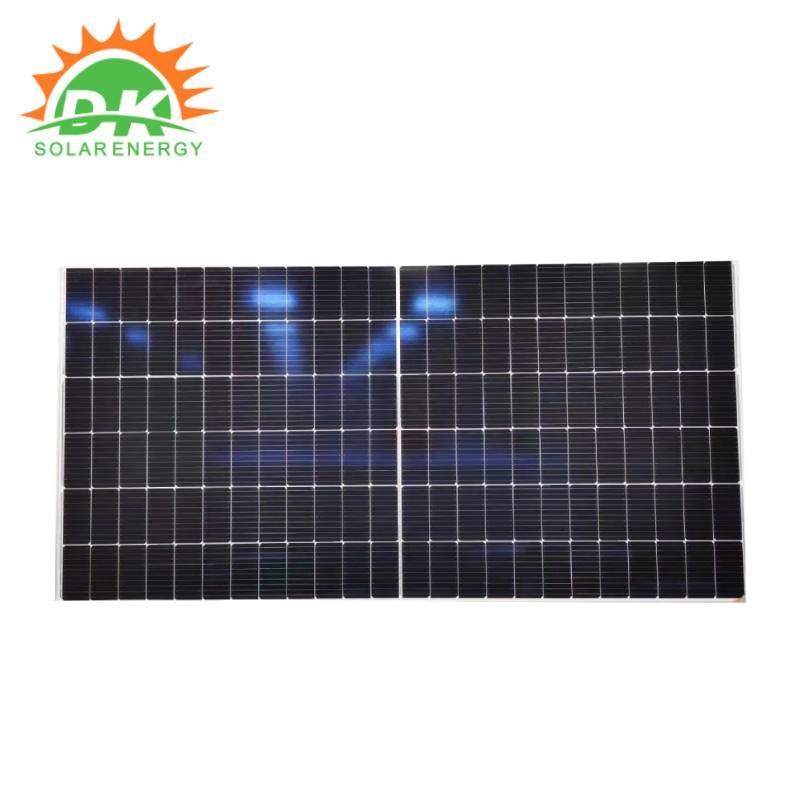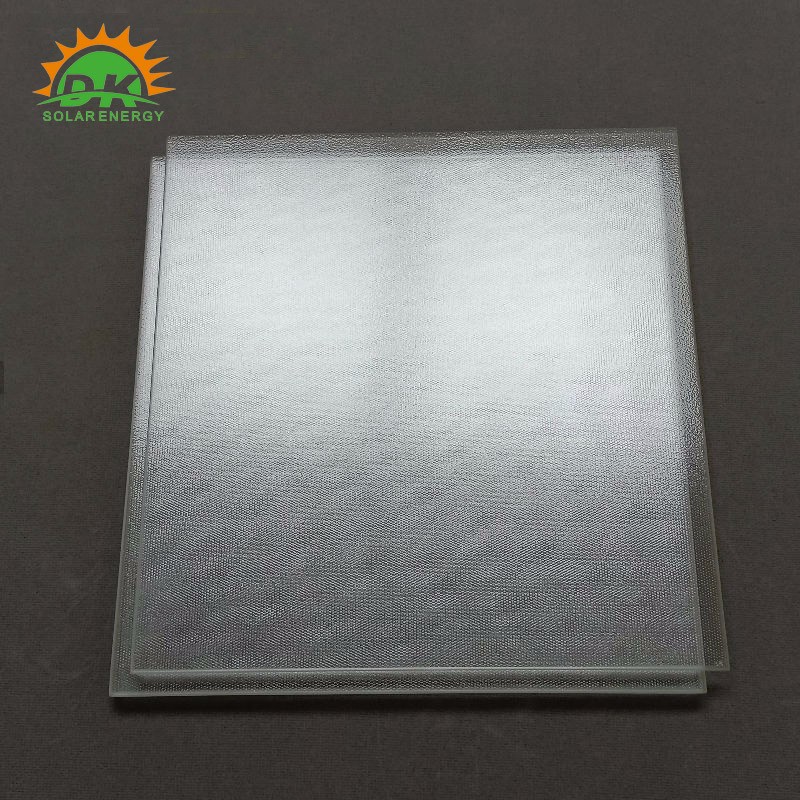Here's the best home energy technology we saw this year, from giant batteries to stained glass solar panels to machines that harvest water from thin air.
Think you know what solar panels look like? This thing is capturing the energy of light. Interest Free Solar Panels

The world convened at CES 2024 this past week to get its first look at the tech that could be coming to your home in the near future. Most, if not all, of the tech on display -- from the best of show to the wacky to the cutting edge -- had one thing in common: electricity.
While electricity keeps all your tech running, it's also more of a focus itself this year. There were more than enough solar-powered gadgets, portable power stations and visions for the future of energy to go around. If 2024 is the year you take control of your home's electricity, here's the tech we saw at CES that might help you do it.
EcoFlow had the Delta Pro Ultra loaded up on a cart at CES so you could wheel it around. It's surprisingly easy to move a battery that weighs nearly 200 pounds.
The variety of backup batteries has exploded over the last few years. Other companies have introduced their competitors to Tesla's well-known Powerwall battery, while the field of smaller, portable power stations is even more crowded. EcoFlow, a company that makes some of CNET's favorite portable power stations, introduced a new battery model that aims for the middle ground between portable and whole home backup.
Can solar panels save you money?
Interested in understanding the impact solar can have on your home? Enter some basic information below, and we’ll instantly provide a free estimate of your energy savings.
When paired with its Smart Home Panel Pro 2, EcoFlow's Delta Pro Ultra power station can provide power to your home or be unplugged and wheeled away for energy on the go. EcoFlow touts an easier setup; you only need to have the smart panel professionally installed. Unlike most home backups, which are permanent, you can take the EcoFlow with you if you move. That can save you on installation costs and keep you from having to buy a new battery at your new place. It's another step toward more reliable and flexible energy use at home.
Jackery's rooftop tent solar panels are a dramatic-looking way to power a camping adventure.
Jackery, a company with plenty of portable power solutions, is looking to launch its most inventive product later this year. That's when you might be able to get your hands on a popup tent with built-in solar panels that can be mounted to the top of a vehicle. Final specs and design are being hashed out, but a company spokesperson said the solar tent is likely to cost about $6,000 when it's available for purchase.
Jackery also had a solar-powered Mars rover on display (that it has no plans of sending to Mars) and an itty-bitty power station with a capacity of just under 100 watt-hours. That means Jackery's Explorer 100 just squeezes under the battery capacity limit for items you can take on a plane, the company told CNET. As a slightly nervous flier, I expect you might draw some extra attention at security.
Savant's smart energy system allows you to switch your home from on-grid to off-grid with a tap.
Savant is one of several companies that gives you insight into and control over how your home uses energy. Through sensors and controllers installed in your breaker box, Savant's system lets you see where power is flowing, from your solar panels, your battery or the grid. With newly introduced features, controlling that flow is easier than ever.
Modes and scenes are customizable configurations of what's turned on or off in your house. Modes like "eco mode" prioritize using power from your solar panels, while "storm watch" ensures your battery is topped up in case of an outage. Scenes can be set to turn off all but necessary circuits when you're away from work or to power certain circuits during one season or another. Changing all that with the push of a button makes saving energy all that much more convenient.
The battery packs in the Bluetti AC180T portable power station are hot-swappable, so you can just take one of these things out of the station while it's operating.
Bluetti has made some of CNET's favorite portable energy products, like power stations and solar panels, since we've been testing them over the last few years. The company is at CES this year demonstrating a few concept products it's hoping to sell in the future.
One is a portable power station with a twist. Rather than one battery stuck inside the walls of the power station, the AC180T has battery packs you can swap in and out, while the power station is running your devices. This could make for even more flexible charging on the go. CNET's Jon Reed said swapping the batteries was "weirdly fun to do." The AC180T has an energy storage capacity of 1,433 watt-hours (or about 1.4 kilowatt-hours.) Bluetti is planning to crowdfund the device's development with an Indiegogo campaign in February.
This mechanical keyboard isn't powered by batteries or with a cord but via the solar cells on the right side of it.
Solar cells that work indoors are not new. You might have used a calculator that powered up under your middle school's fluorescent lights. Ambient Photonics' updated version delivers about three times the energy of those older models. This means they might be able to power things with a slightly higher appetite for energy: computer mice, TV remotes or anything else that might take AA or AAA batteries.
Goal Zero's Alta 50 portable refrigerator can supposedly run on just 8 watts of power once it's holding at temperature. That can last a long time on even a small power station.
Bluetti's swappable battery tech will be useful in other Bluetti devices, like the MultiCooler portable fridge. The fridge can keep things cool or downright frigid, from 68 to -4 degrees Fahrenheit. What's more, it has a built-in ice maker. Whether that's strictly necessary for a portable fridge is probably up for debate, but you can imagine the device making for some truly luxurious camping.
Other portable fridges from another portable power stalwart were debuted by Goal Zero. The Alta fridges come in 50- and 80-liter capacities. The smaller version can maintain temperature using just 8 watts of power, once it's reached the targeted temp. That means that Goal Zero's smallest power station can run the fridge for over a day. Goal Zero introduced three new portable power stations and a home battery backup, joining the trend of other energy storage companies that started small, but are now offering larger, whole-home backup solutions at a more affordable price.
Think you know what solar panels look like? This thing is capturing the energy of light.
CES is great for finding odd, but cool little gadgets and the solar sector is no exception. Japanese solar company inQs is promoting its transparent solar technology with a range of solar-powered, see-through gadgets, including a silicon quartz crystal (pictured above) that can generate photovoltaic electricity. A company representative told CNET's Jon Reed its technology could also be deployed in windows, transparent or stained.
Because transparent solar tech is still emerging and not yet widely deployed, the challenge of recycling them doesn't loom as large as it does from the more traditional opaque, black or blue panels you see on roofs. Still, inQs says its tech, built on silicon quartz, is easier and safer to recycle and includes no rare earth materials.
Electronics company Panasonic was also talking up see-through solar tech this year, namely perovskites. Perovskite solar technology is still largely in research and development (and not just by Panasonic) but could open up a wide variety of solar applications, like solar on windows and the side of buildings. Or, you can stick solar on solar: In labs, perovskite solar layered on top of silicon solar panels achieves much higher efficiency ratings than either technology can separately.
Xing Mobility tested its battery cooling technology by driving three needles into the side of a battery pack. You can see where those cells blew up, but the rest of the pack looks alright.
Batteries are a key element in the electrification of everything and the transformation of the power grid. Increasing their durability and safety, especially in settings like electric vehicles, could be an important way of stretching the resources needed to make them. CNET's Jon Reed saw battery cells from Xing Mobility that, when intentionally damaged, caught fire but quickly extinguished. That's thanks to a nonconductive, petroleum-based lubricant that extinguished the fire and cooled the battery off quickly. Most of the battery actually kept its charge. Batteries with this ability could be useful in cars and tractors and trucks, where they're more likely to get a little roughed up.
Bosch says its new IDS Ultra cold-climate heat pump can meet a home's heating needs when the outside temperature drops as low as 5 degrees Fahrenheit.
Heating and cooling a home is often its biggest energy-related expense. Heat pumps are the electric heating and cooling solution of the future as they are efficient and can be powered by clean energy sources. One ding against them is their performance in cold climates, although as the technology improves, heat pumps are performing better and better below zero.
Bosch's new heat pump, the IDS Ultra, is the company's first heat pump designed for cold-weather performance. Unveiled on the CES floor this year, the IDS Ultra can keep your house warm down to 5 degrees Fahrenheit (-15 degrees Celsius) and keep working down to -13 F (-25 C). The Bosch model joins others from companies like Daikin, Midea, Johnson Controls, Lennox International, Carrier, Trane and Rheem that have passed the first stage of the Department of Energy's Residential Cold Climate Heat Pump Challenge.
The Genesis Systems WaterCube is a big steel box that pulls water from the air.
It sounds like tech from a long time ago in a galaxy far, far away, but you might soon be able to pull water right from the air. The WC-100 WaterCube from Genesis Systems is an 800-pound machine that can harvest 100 gallons of water per day at 80 degrees Fahrenheit and 50% humidity, although the company says it can work all the way down to below 10% humidity. It should get about 200 pounds lighter before it reaches the market, the company says.
The WC-100 WaterCube could be useful if your water supply is disrupted or to offset your water bill. You'd have to shave a lot of that water bill to recoup the cost, which sits at a hefty $20,000.
Best Solar Products and Companies
Living Off the Grid Series
Updated Jan. 15, 2024 6:00 a.m. PT
We thoroughly evaluate each company and product we review and ensure our stories meet our high editorial standards. Read how we test products and services.

Industrial Solar Panels Instantly estimate your solar cost and savings. Pick a provider later.